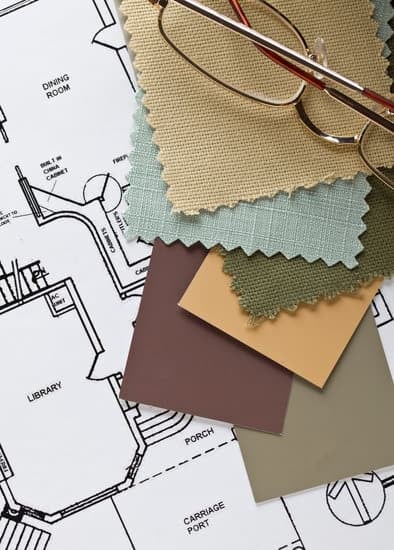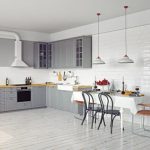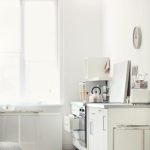Welcome to the world of home recording studios. If you’re passionate about music and have decided to create your own recording studio at home, congratulations. Decorating your studio space is an important aspect of creating a comfortable and inspiring environment where creativity can thrive.
A well-decorated home recording studio not only enhances the aesthetic appeal but also contributes to the overall functionality and productivity of the space. From optimizing acoustics to organizing cables and equipment, every element plays a vital role in creating an efficient workflow.
Why is it important to decorate your studio space? The answer lies in the impact that the environment has on our mindset and motivation. A visually appealing and thoughtfully designed space can inspire creativity, enhance focus, and make the recording process more enjoyable. Additionally, a well-decorated studio can help promote a professional image if you plan on inviting clients or collaborators into your space.
As you embark on decorating your home recording studio, this article will guide you through various aspects such as assessing the space, choosing colors and themes, selecting essential furniture, incorporating sound treatment and acoustics, personalizing the area, organizing cables and equipment, optimizing lighting options, and doing it all within a budget. So let’s dive in and bring your dream studio to life.
Assessing and Planning the Space
When it comes to designing a home recording studio, one of the first steps is to assess and plan the space. This crucial step ensures that your studio will be both functional and efficient, allowing you to focus on your creative process without any unnecessary obstacles. In this section, we will explore some key considerations when assessing and planning your studio space.
Taking measurements and considering the layout:
Measurements are essential when it comes to utilizing your space effectively. Knowing the dimensions of the room allows you to determine what equipment will fit comfortably and how to best arrange your furniture. Consider factors such as ceiling height, wall dimensions, and any available alcoves or corners that can be utilized for specific purposes.
Creating a functional and efficient workflow:
Designing a home recording studio involves organizing your equipment in a way that promotes an efficient workflow. Think about the order in which you use your equipment and make sure they are easily accessible from your main workstation. Additionally, consider setting up stations for different tasks such as mixing or editing, ensuring that each area has its designated tools.
Considering acoustics and soundproofing requirements:
Acoustics play a crucial role in achieving high-quality sound recordings. Assessing the acoustic qualities of your room helps identify any issues like excessive reverberation or unwanted noise interference. Consider investing in soundproofing materials like acoustic panels or diffusers to control reflections within the room. It’s also important to take into account external disturbances such as street noise or neighborly sounds when selecting a suitable space for your studio.
Overall, taking the time to assess and plan your home recording studio space will greatly contribute to its functionality and efficiency. By carefully considering measurements, creating a logical workflow, and addressing acoustic concerns, you can set yourself up for success in achieving optimal results during your recording sessions.
Choosing the Right Colors and Themes
When it comes to decorating a home recording studio, choosing the right colors and themes can greatly impact the overall ambiance and inspire creativity. This section will explore different color palettes and themes that can be incorporated into your studio space.
Exploring Different Color Palettes
The choice of colors in your home recording studio can have a significant impact on the atmosphere and mood. Consider using a color palette that aligns with the type of music you create or the emotions you want to evoke.
For example, warm tones like reds and oranges can create an energetic and stimulating environment, while cool tones like blues and greens can provide a calming and relaxing atmosphere. Additionally, neutrals such as grays or whites can provide a clean and professional look to your space.
Incorporating Themes for Inspiration
In addition to selecting colors, incorporating a theme or style into your studio can help set the tone for creativity. Whether it’s vintage-inspired decor, futuristic elements, or nature-inspired motifs, having a specific theme can add visual interest to your studio. Consider incorporating elements like posters or artwork that reflect your chosen theme. This not only adds personality but also serves as a source of inspiration during recording sessions.
Creating Balance
While color palettes and themes are important considerations when decorating your home recording studio, it is essential to strike a balance between aesthetics and functionality. Ensure that the chosen colors do not clash with equipment or distract from the primary purpose of the space. It is also important to consider how lighting interacts with different colors, as certain lighting setups may affect the appearance of colors in your studio.
By carefully selecting colors and incorporating themes that resonate with you creatively, you can create an inspiring environment within your home recording studio. Remember to maintain balance between aesthetics and functionality so that the decor enhances rather than hinders your recording process.
Essential Studio Furniture
When setting up a home recording studio, it is crucial to select the right furniture that not only enhances the functionality of the space but also ensures comfort and ergonomics. The following are key considerations when choosing essential studio furniture:
- Selecting ergonomic and comfortable chairs and desks: Since musicians and producers often spend long hours in the studio, it is important to choose chairs and desks that provide proper support and comfort. Look for adjustable features such as height, armrests, and lumbar support. Investing in a high-quality chair can prevent back strain and promote better posture.
- Maximizing storage solutions for equipment and accessories: A well-organized studio is essential for efficient workflow. Consider storage options such as shelves, cabinets, or racks to neatly store equipment, cables, and accessories. Having everything easily accessible reduces clutter and saves time during recording sessions.
- Incorporating adjustable lighting options: Good lighting is essential for both functionality and creating the right atmosphere in a recording studio. Choose adjustable lighting options such as desk lamps or overhead lights with dimming features to customize the lighting according to specific needs or moods during different stages of the recording process.
| Furniture Consideration | Benefits |
|---|---|
| Ergonomic chairs and desks | Ensures comfort during long hours of work, prevents back strain |
| Maximizing storage solutions | Reduces clutter, saves time during recording sessions |
| Adjustable lighting options | Allows for customization of lighting based on specific needs or moods |
Sound Treatment and Acoustics
Creating optimal sound quality is a fundamental aspect of setting up a home recording studio. One of the key factors in achieving this is sound treatment and acoustics. By understanding the importance of sound absorption and diffusion, incorporating bass traps, diffusers, and acoustic panels, and implementing some tips for enhancing overall sound quality, you can greatly improve the audio experience within your studio space.
Sound absorption plays a crucial role in minimizing echoes and reverberation that can negatively impact recordings. Bass traps, which are specialized devices designed to absorb low-frequency sound waves, can be strategically placed in corners where these frequencies tend to accumulate. Diffusers help scatter reflections from walls and ceiling surfaces, allowing for a more balanced sound. Acoustic panels are versatile tools that provide both absorption and diffusion properties, helping to control unwanted reflections.
In addition to using specialized equipment like bass traps, diffusers, and acoustic panels, there are several other measures you can take to enhance the acoustics of your home recording studio. For instance, arranging furniture strategically can help minimize unwanted reflections or standing waves in the room. Placing bookshelves or heavy curtains against walls can also decrease echo by absorbing sound waves.
| Sound Treatment | Data |
|---|---|
| Bass Traps | Strategically place in corners where low-frequency sound waves accumulate |
| Diffusers | Scatter reflections from walls and ceiling surfaces for a more balanced sound |
| Acoustic Panels | Provide absorption and diffusion properties for controlling unwanted reflections |
When it comes to enhancing the overall sound quality in your studio, proper speaker placement is crucial. Placing speakers on isolation pads or stands can prevent vibrations from transferring to other surfaces and potentially affecting the accuracy of your mixes. Additionally, investing in high-quality studio monitors that accurately reproduce sound can greatly improve the listening experience.
Lastly, it’s important to regularly assess and adjust the sound treatment and acoustics in your home recording studio. As you continue to work and gain experience within your space, you may discover areas that could benefit from additional treatment or modifications. Seeking feedback from fellow musicians or industry professionals can provide valuable insights and help you make necessary adjustments to achieve the best possible sound quality.
By prioritizing sound treatment and acoustics in your home recording studio, you are setting yourself up for success in producing high-quality recordings with accurate sound representation. Whether you’re a beginner or a seasoned professional, taking the time to optimize your studio’s audio environment will undoubtedly elevate your music production capabilities.
Personalizing the Space
In the personalization phase of decorating your home recording studio, you have the opportunity to truly make the space your own and create an environment that inspires creativity. The goal is to infuse the studio with elements that reflect your personality and taste while maintaining a professional atmosphere. Here are some ideas for personalizing your space:
- Incorporating personal touches through artwork, posters, or memorabilia: Hang up artwork or posters that resonate with you and your music. Frame album covers or concert tickets as a reminder of your achievements and inspirations.
- Customizing the studio with unique wall decals or murals: Consider adding custom wall decals or murals that depict musical instruments, notes, or lyrics. This can add visual interest to the space and enhance the overall theme.
- Displaying awards or achievements to create a motivating environment: If you’ve received any awards or recognition for your music, proudly display them in your studio. This serves as a constant reminder of your accomplishments and provides motivation during recording sessions.
Personalization is key in creating a truly unique and inspiring space for your home recording studio. By incorporating these ideas, you can make the studio truly yours while fostering creativity and productivity. Remember, it’s important to strike a balance between personalization and maintaining a professional atmosphere to ensure optimal recording experiences.
Organizing Cables and Equipment
One of the key elements in creating a functional and efficient home recording studio is organizing cables and equipment. Cables can quickly become tangled and create a cluttered workspace, while disorganized equipment can hinder workflow and productivity. In this section, we will discuss some tips and solutions for keeping your cables organized and untangled, as well as efficiently arranging and labeling your equipment.
Firstly, it’s important to have a designated area for cable management. This could include cable ties, Velcro straps, or cable sleeves to keep cables neatly bundled together. Additionally, using cable clips or hooks can help keep them off the floor and prevent tripping hazards. Labeling your cables with tags or colored tape can also make it easier to identify individual cables when needed.
Another aspect of organizing your studio is arranging your equipment in a logical and ergonomic way. Consider the frequency of use for each piece of equipment and place them accordingly. For example, frequently used items should be within easy reach, while less commonly used ones can be stored away but still easily accessible. Using storage solutions like shelves, racks, or drawers can help keep everything tidy.
Furthermore, implementing an inventory system for your equipment can save you time and frustration when searching for specific tools or accessories. You can create a spreadsheet or use dedicated software to keep track of what you have. This way, you always know where your gear is located and if anything needs to be replaced or repaired.
By organizing your cables and equipment effectively, you’ll not only maintain a clean and clutter-free space but also optimize your workflow in the studio. A well-organized setup not only increases efficiency but also reduces stress during recording sessions as you won’t waste time looking for misplaced items. Take the time to regularly assess and adjust your cable management system as your needs evolve over time.
Some additional resources that may provide further inspiration and guidance on organizing cables in a home recording studio:
- The Cable Management subreddit provides various tips and solutions for both cable organization and management.
- YouTube channels such as “Bobby Owsinski’s Big Picture Music Production Blog” offer videos on studio organization, including cable management tips.
- Online forums like Gearslutz or Home Recording Forums have threads dedicated to discussing cable organization and equipment arrangement in home recording studios.
Overall, organizing cables and equipment is an essential aspect of creating an efficient and productive home recording studio setup. Taking the time to implement effective cable management systems and arranging equipment thoughtfully can greatly enhance your workflow and creativity.
Lighting and Atmosphere
Choosing Optimal Lighting Options
When it comes to lighting in a home recording studio, it is important to consider both functionality and ambiance. Adequate lighting is necessary for visibility and task performance, while the right atmosphere can enhance creativity and inspiration. Start by assessing the natural light sources in your studio space.
Set up your workstation near windows to take advantage of this free and refreshing light source. Additionally, consider incorporating adjustable blinds or curtains to control the amount of natural light entering the room.
In terms of artificial lighting options, choose fixtures that provide bright and even illumination without casting shadows. LED lights are a popular choice for home recording studios due to their energy efficiency and cool temperature. Look for fixtures with adjustable brightness levels so you can customize the lighting according to your needs. Desk lamps with flexible necks are also useful for directing additional light precisely where it’s needed.
Incorporating Dimmable Lights or LED Strips
To create the right atmosphere in your home recording studio, consider incorporating dimmable lights or LED strips. Dimmable lights allow you to adjust the brightness level to match different activities or moods. Lowering the lights can create a more intimate setting while higher brightness levels ensure optimal visibility during recording sessions.
LED strips are another versatile option that can add a dynamic element to your studio decor. These strips often come with color-changing features, allowing you to set different lighting colors depending on your preferences or project requirements. Whether you want a calming blue hue or an energetic red glow, LED strips give you the freedom to experiment with various lighting effects.
Utilizing Natural Light Sources
While artificial lighting is crucial in a recording studio environment, don’t overlook the benefits of natural light sources as well. Sunlight not only provides ample illumination but also brings a refreshing and inspiring atmosphere into the space. Positioning your workspace near windows allows you to take advantage of the natural scenery outside, promoting a sense of connection with the outside world.
Be mindful, however, of potential issues such as glare or excessive heat from direct sunlight. Consider installing blinds or curtains that can be adjusted to control the amount of incoming light. You may also want to invest in UV-filtering window films to protect your equipment and decor from sun damage.
By carefully selecting optimal lighting options, incorporating dimmable lights or LED strips, and utilizing natural light sources, you can create a home recording studio with both functionality and a stimulating atmosphere. The right combination of lighting elements will not only enhance your recording experience but also contribute to a comfortable and inspiring environment.
Budget-Friendly Decoration Ideas
Decorating a home recording studio doesn’t have to break the bank. With some creativity and resourcefulness, you can achieve a visually appealing and inspiring space without spending a fortune. Here are some budget-friendly decoration ideas to consider:
- Thrifty DIY solutions: Get creative and make your own decor items to save money. Repurpose old picture frames or pallets into acoustic panel frames and cover them with fabric for an affordable sound treatment solution. You can also make your own wall decals using vinyl stickers or create artwork using inexpensive materials like canvas boards and acrylic paints.
- Utilize secondhand or upcycled furniture: Instead of splurging on brand new furniture, consider browsing thrift stores or online marketplaces for secondhand options. Not only can you find unique pieces that add character to your studio, but they often come at a fraction of the cost. Consider refurbishing or repainting these items to match your aesthetics.
- Affordable decor options: Plants are an excellent way to add a touch of life and freshness to any space while also improving air quality. Invest in low-maintenance plants such as succulents or snake plants that require minimal care. Additionally, rugs not only enhance the visual appeal but also contribute to sound absorption.
Look for affordable rugs that complement your color scheme and provide comfort underfoot. Lastly, curtains can be used as both functional and decorative elements by controlling natural light and adding texture to the room.
By incorporating these budget-friendly decoration ideas into your home recording studio, you can create a visually pleasing and inspiring environment without breaking the bank. Remember, it’s all about thinking outside the box and personalizing the space in ways that reflect your style and personality as an artist.
Finalizing and Adjusting
After completing the decoration of your home recording studio, it is important to periodically reassess and make adjustments to ensure that the space continues to meet your needs. Finalizing and adjusting the studio decor should be an ongoing process that allows you to create a comfortable and inspiring environment for your music production.
To begin, seek feedback from fellow musicians or industry professionals who can provide valuable insights on how to improve your studio setup. They may have suggestions on acoustics, layout, or even decor choices that can enhance the functionality and creativity of your space.
Continuously adapting and improving the studio is essential as your needs and preferences evolve over time. Stay open-minded and embrace experimentation when it comes to adjusting the decor. Don’t be afraid to try new arrangements, colors, or themes that align with your artistic vision. This flexibility will allow you to create a space that truly reflects your unique style and facilitates a productive workflow.
Ultimately, finalizing and adjusting the studio decor is not just about aesthetics but also about maximizing productivity and creativity. By regularly assessing and making improvements to your home recording studio, you will create an environment that inspires you to create high-quality music while maintaining a comfortable working space.
| Finalizing | Adjusting |
|---|---|
| Seek feedback from musicians or industry professionals | Periodically reassess the studio |
| Experiment with new arrangements, colors, or themes | Make adjustments as needs evolve |
Conclusion
In conclusion, creating a well-decorated home recording studio is a crucial step in setting up a professional and inspiring space. By assessing and planning the layout, considering acoustics, choosing the right colors and themes, selecting essential furniture, incorporating sound treatment and organizing cables and equipment, you can create a functional and efficient workflow that enhances your creativity.
Personalizing the space with artwork, posters, or memorabilia adds a personal touch that reflects your unique style and personality. Displaying awards or achievements can further motivate you to strive for excellence. It’s important to continuously reassess and adjust your studio decor as needed, seeking feedback from fellow musicians or industry professionals to ensure it meets your evolving needs.
Remember that budget-friendly decoration ideas are also available. Thrifty DIY solutions, secondhand or upcycled furniture, and affordable decor options such as plants, rugs, or curtains can help create an inviting atmosphere without breaking the bank. There are numerous resources available online for further inspiration and guidance on decorating your home recording studio.
In the end, designing a comfortable and inspiring environment in your home recording studio plays a significant role in enhancing your creativity and productivity. Take the time to carefully plan your space, experiment with different decor options, and make adjustments along the way to create an environment that stimulates your musical passion.
Frequently Asked Questions
How can I make my recording studio look cool?
Making a recording studio look cool involves considering both aesthetic and functional elements. To begin with, choose a theme or design concept that reflects your personal style or the vibe you want to create in the space. This could be modern, industrial, vintage, or any other style that resonates with your musical taste.
Consider using unique and eye-catching decor such as framed album covers, vintage instruments, or music-themed artwork to add visual interest. Additionally, invest in good lighting options like dimmer switches or color-changing LED lights to create different moods during recording sessions. Don’t forget about the practical aspects as well – organize cables neatly, optimize storage solutions for equipment and accessories, and ensure easy access to frequently used items.
How to design home recording studio?
Designing a home recording studio requires thoughtful planning to optimize both functionality and creativity within the available space. Start by identifying the primary purpose of your studio: whether it mainly focuses on vocal recordings, instrument tracking, mixing/mastering workstations or a combination of these elements. This will help determine the necessary equipment and spatial considerations.
When designing the layout, prioritize sound isolation by using materials like acoustic panels, foam insulation, bass traps, and diffusers to minimize unwanted reverb or external noise interference. Ergonomics is also vital – arrange your equipment in an intuitive and comfortable way for efficient workflow. Finally, consider adding dedicated areas for relaxation or inspiration within your studio space such as comfortable seating or a small library of music-related books.
What color should I paint my music studio?
The color choice for your music studio should align with the atmosphere you want to create within the space while also considering technical factors related to sound production. Colors have psychological effects on individuals; thus, you may want to select colors that stimulate focus and productivity like shades of green or blue rather than distracting bright colors like red or yellow. That being said, neutral tones such as gray or beige can provide a calm backdrop that doesn’t interfere with your creative process.
It is also important to consider light reflection – darker colors tend to absorb more light, potentially enhancing acoustics by reducing reflections. However, be cautious not to make your studio feel too dark or dingy; consider adding suitable lighting fixtures to balance out any lack of natural light. Ultimately, choose a color palette that suits your personal taste and promotes a conducive environment for creativity and productivity.

I’m thrilled to be your companion on this exciting journey through the world of home decor and design. With a passion for turning houses into homes and a keen eye for the finer details, I’m here to help you transform your living spaces into beautiful, functional, and meaningful havens.





